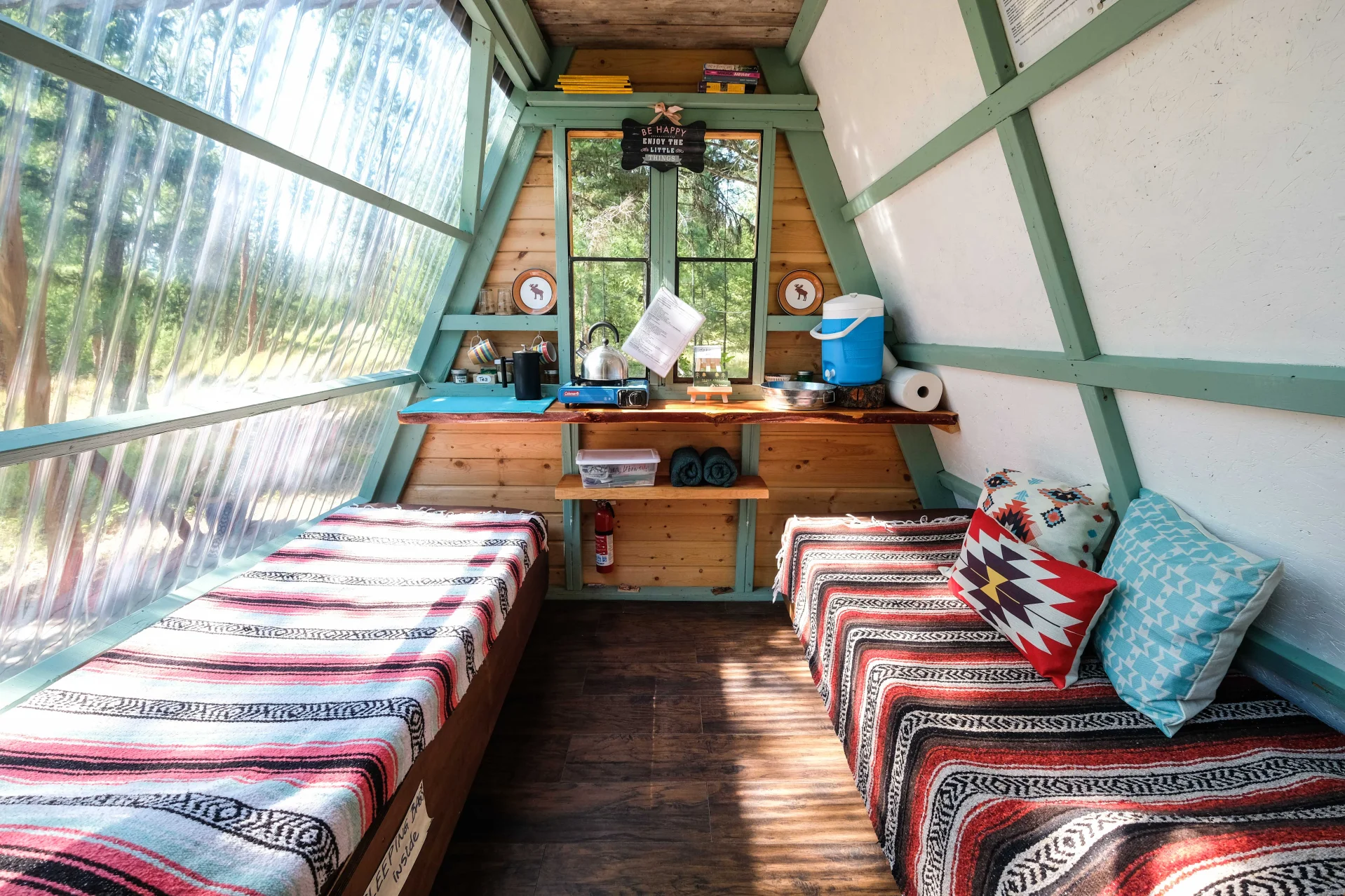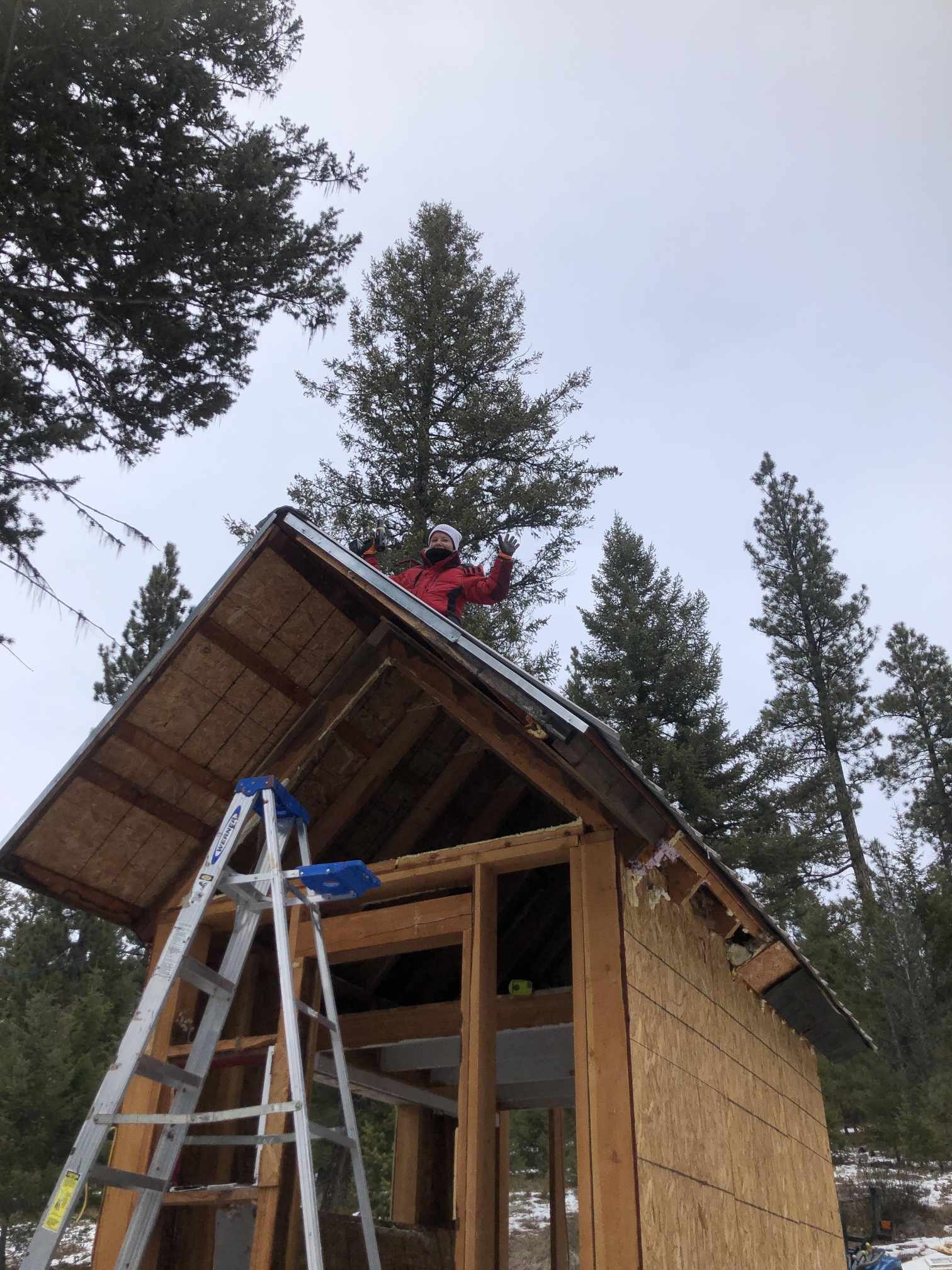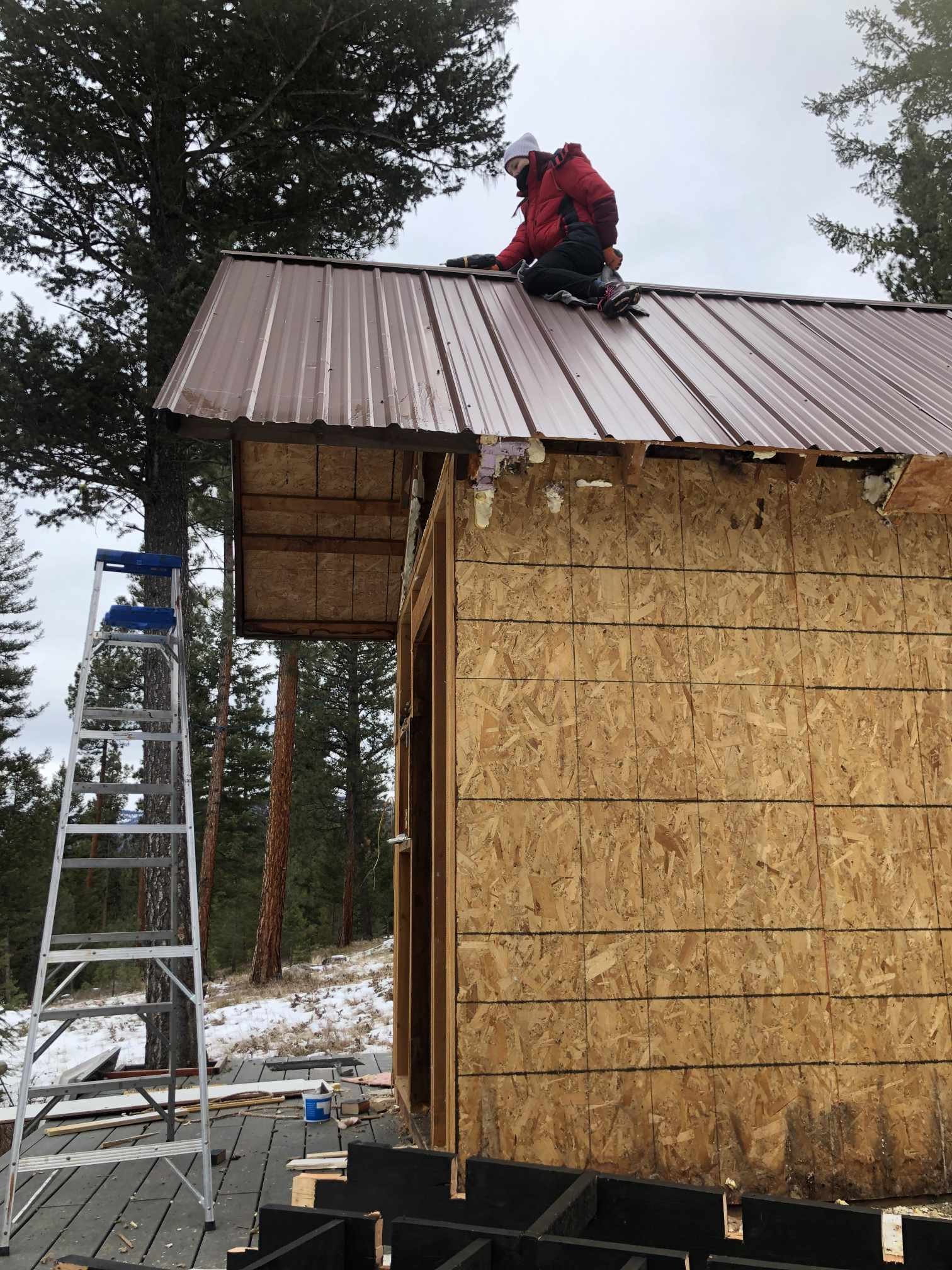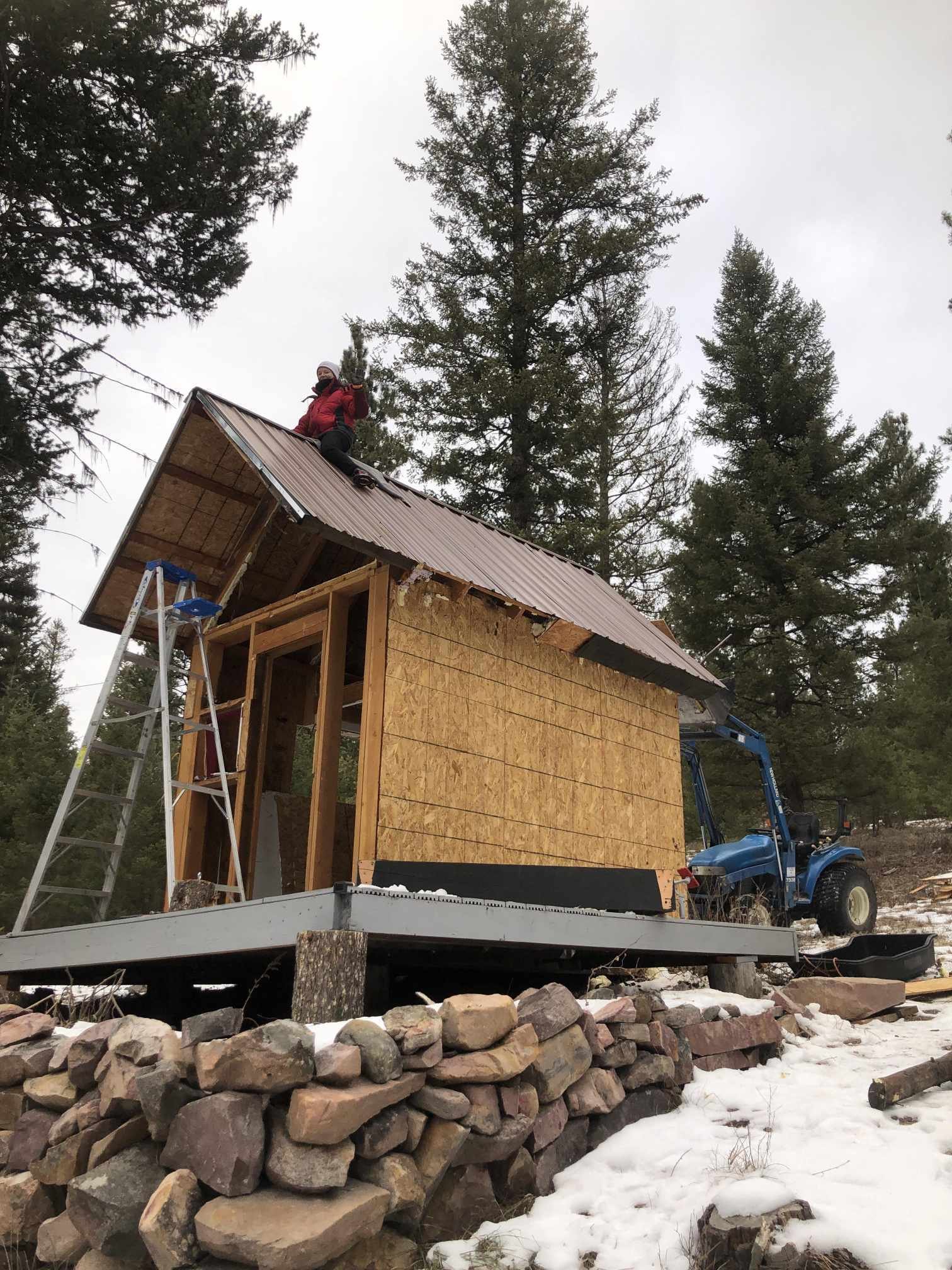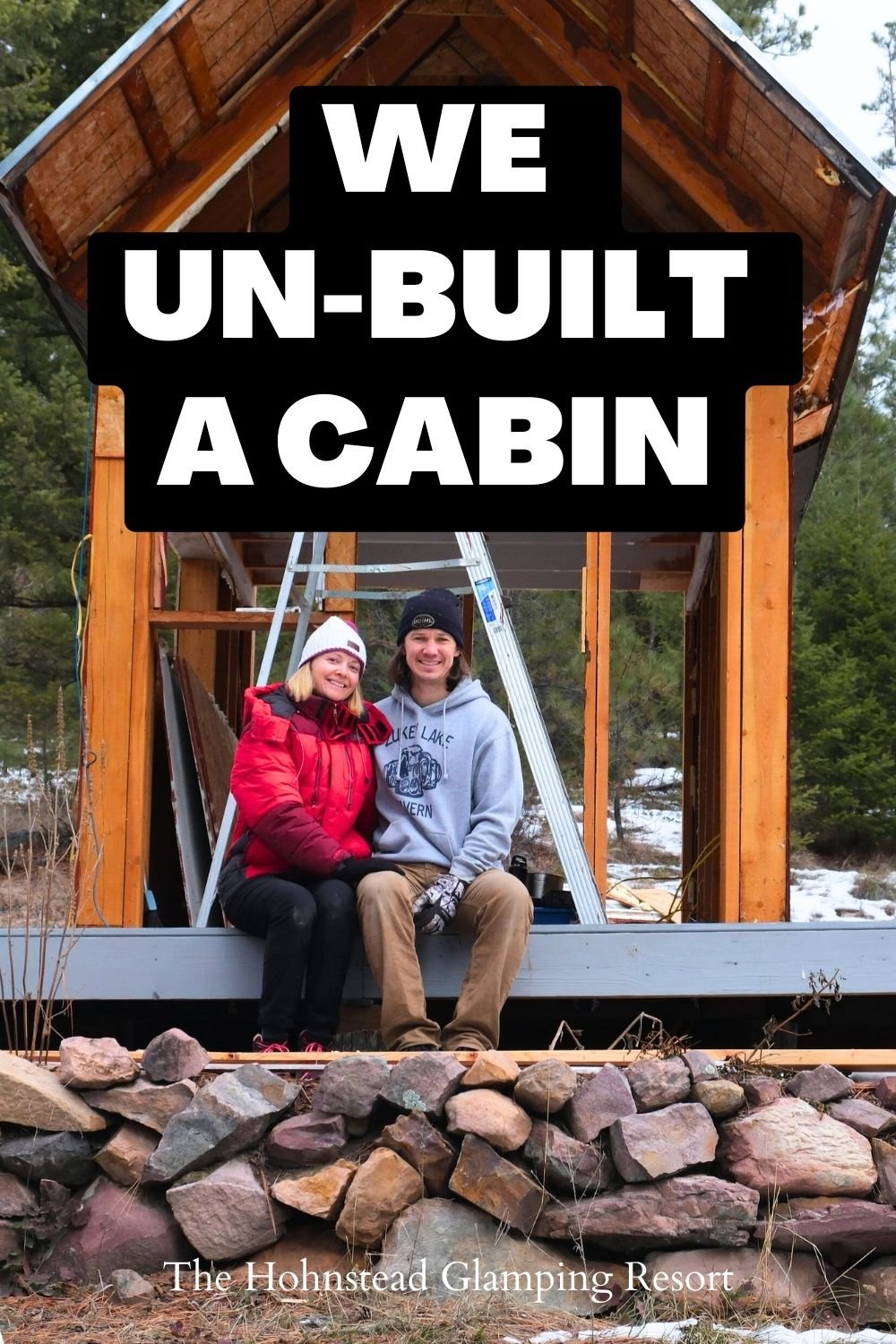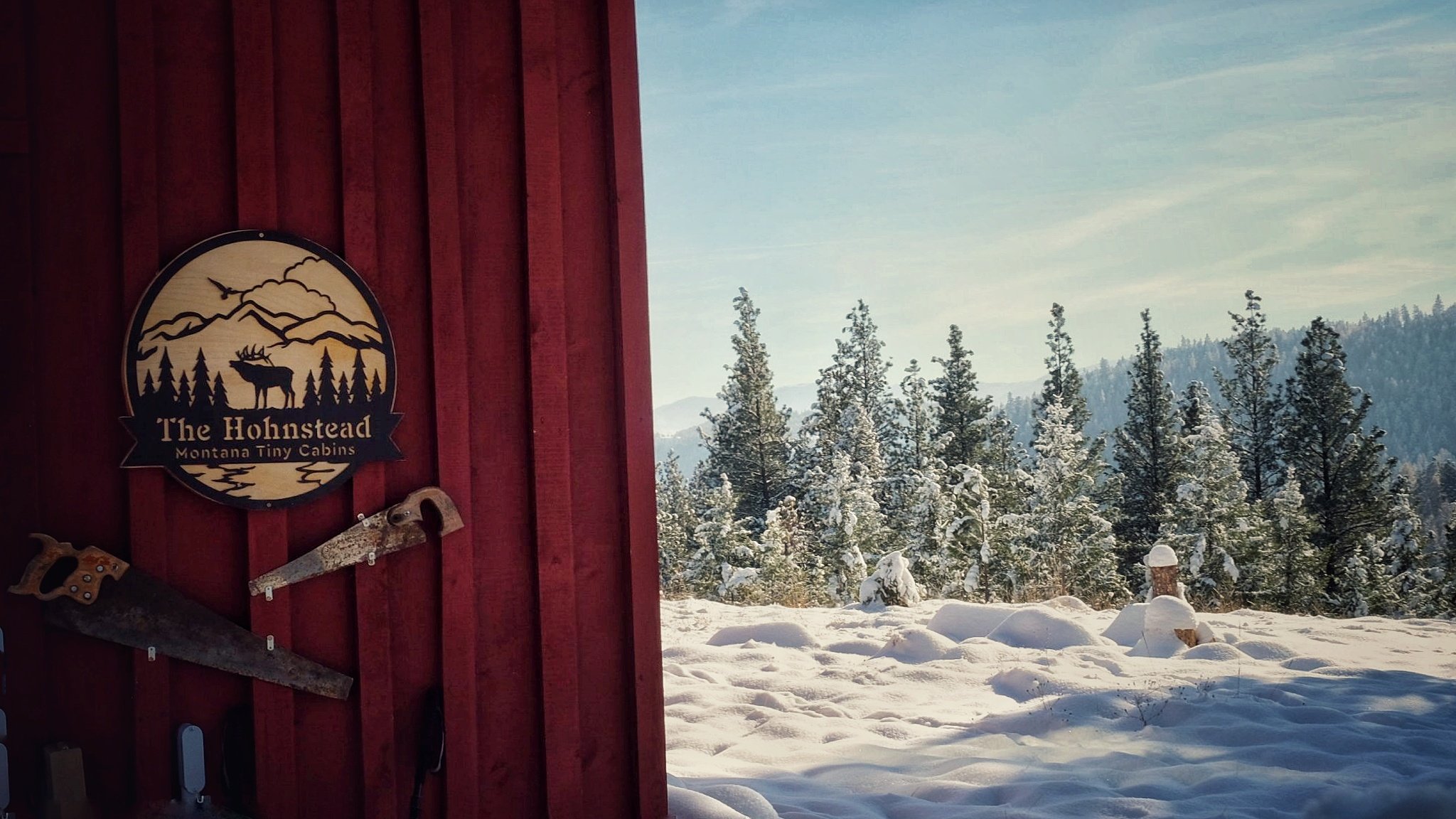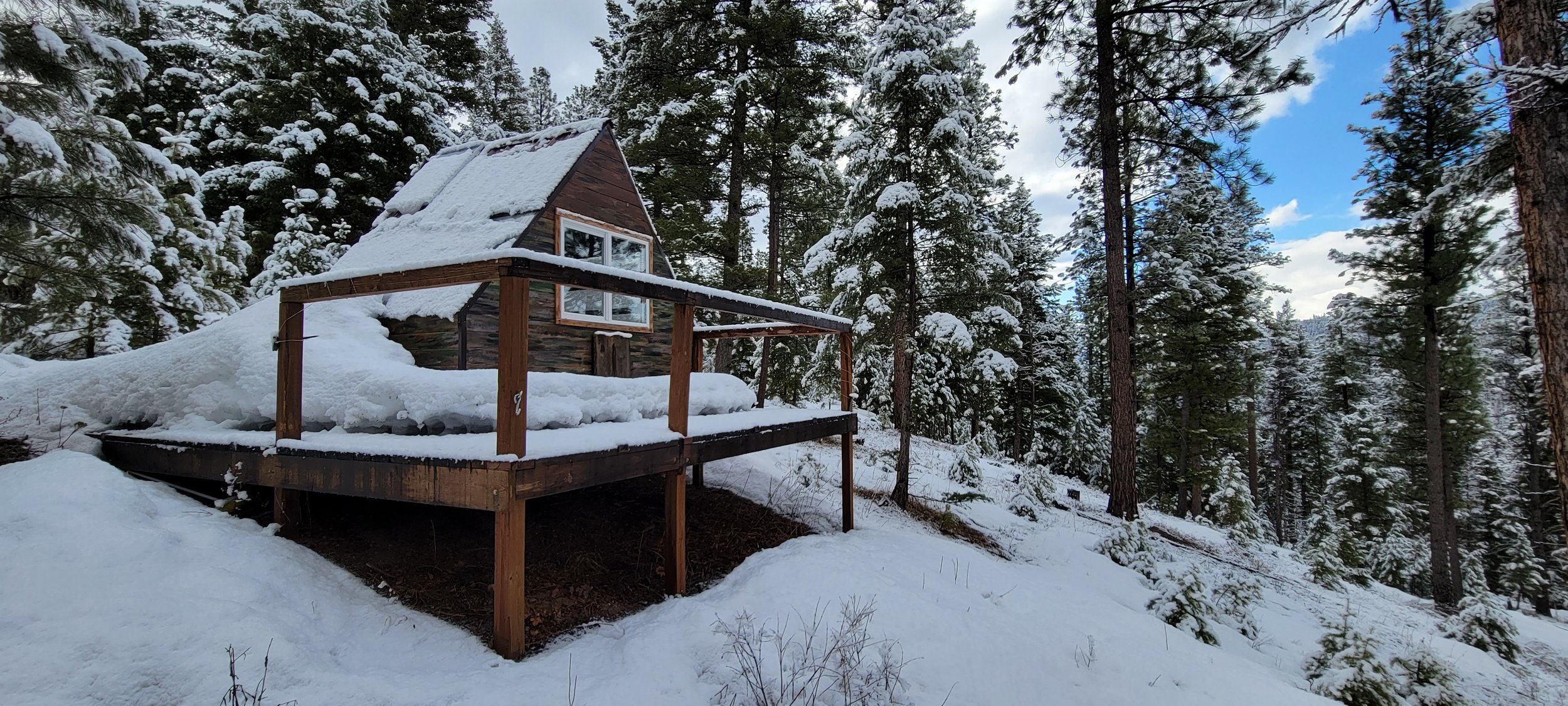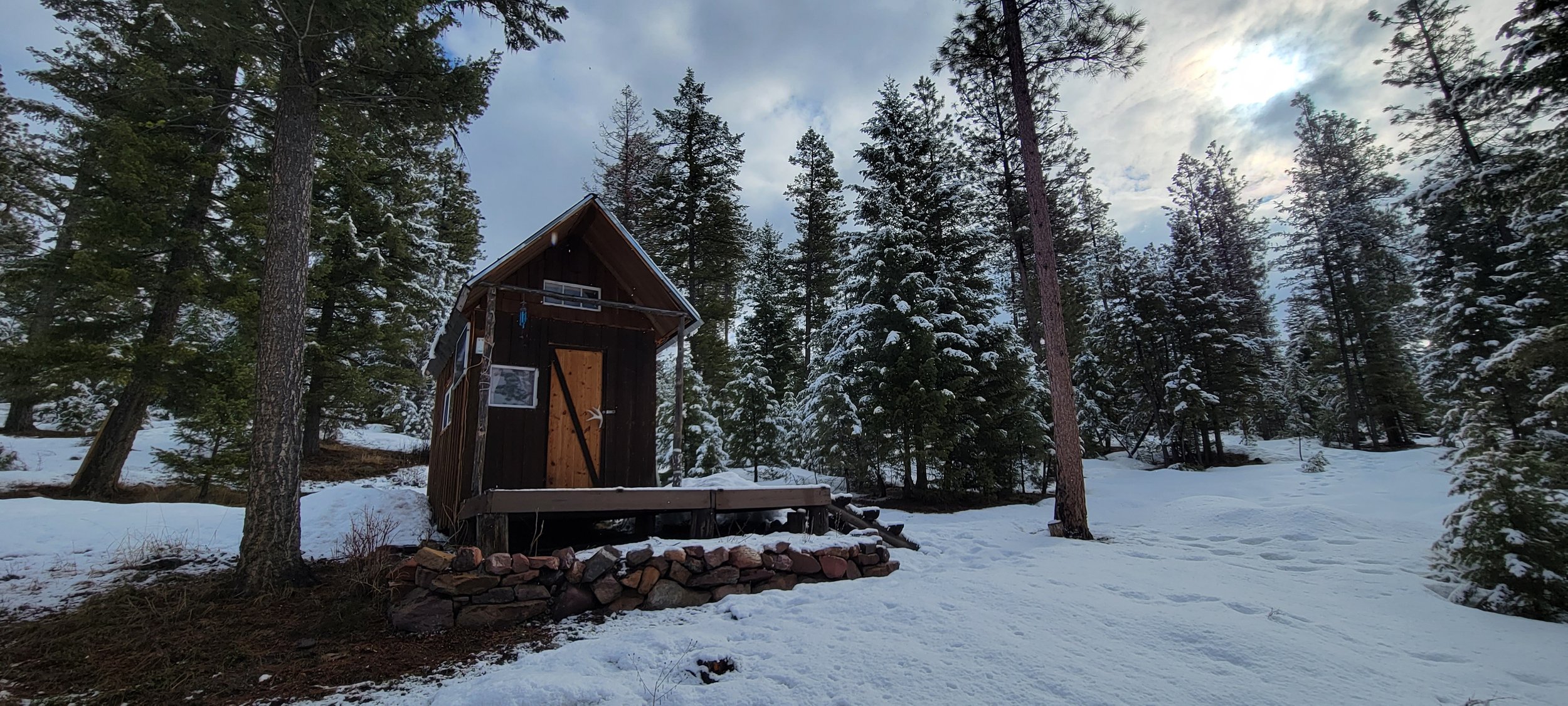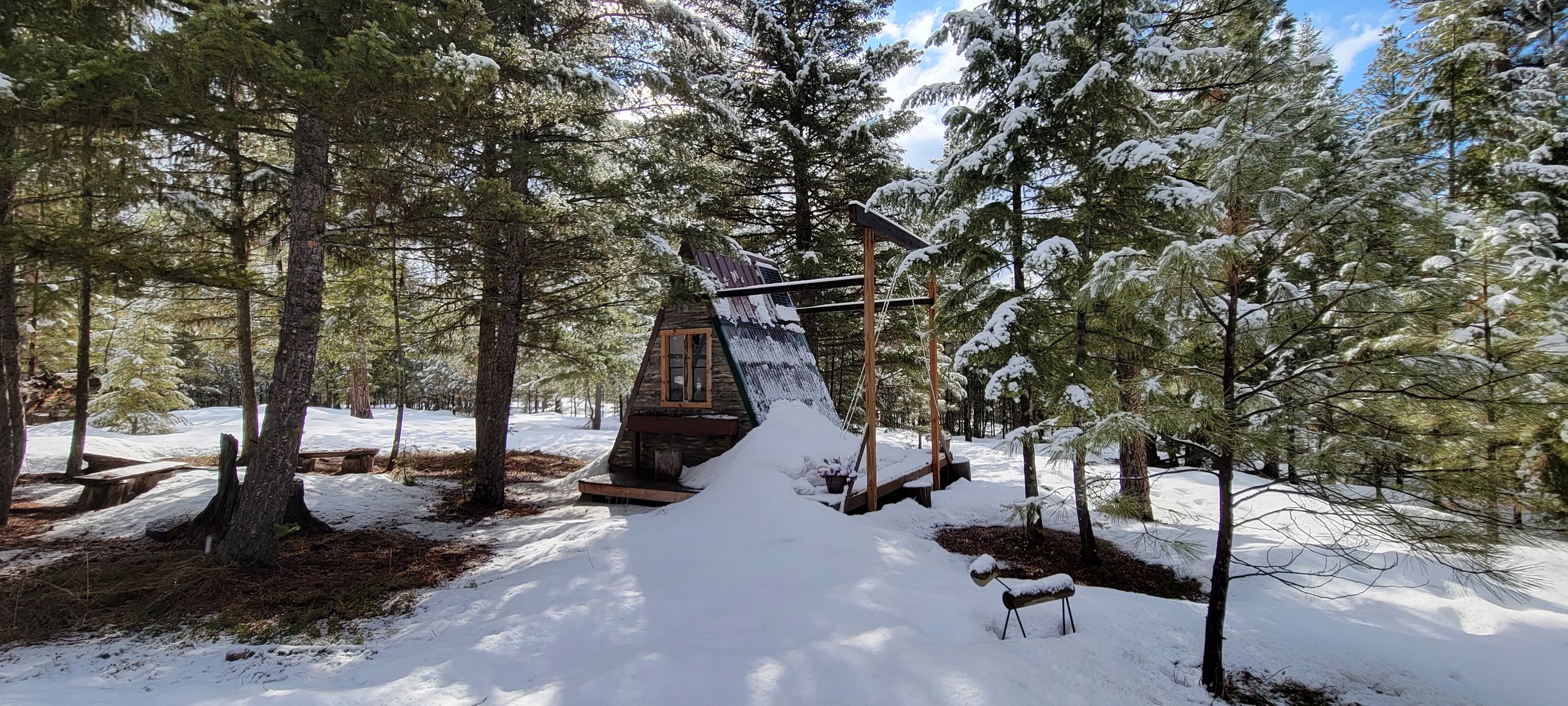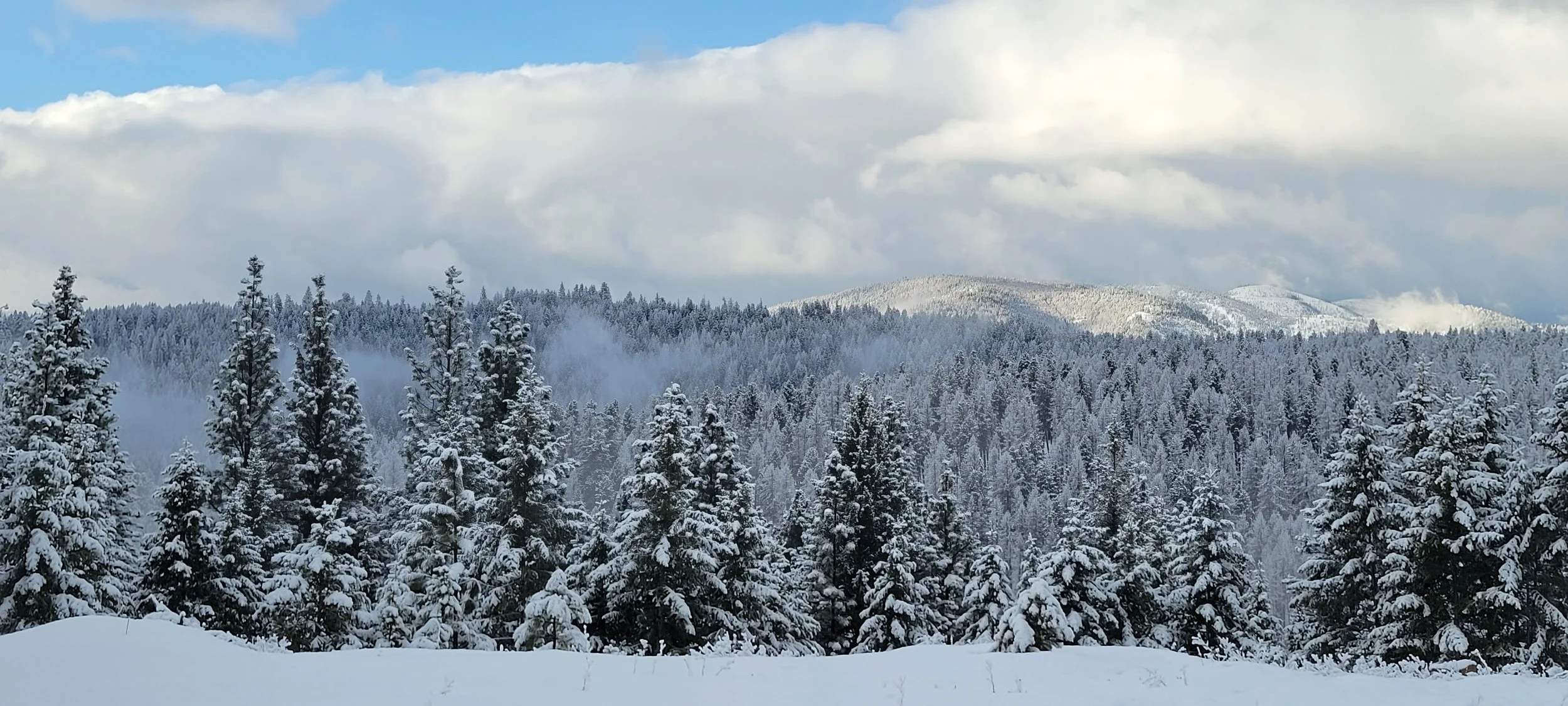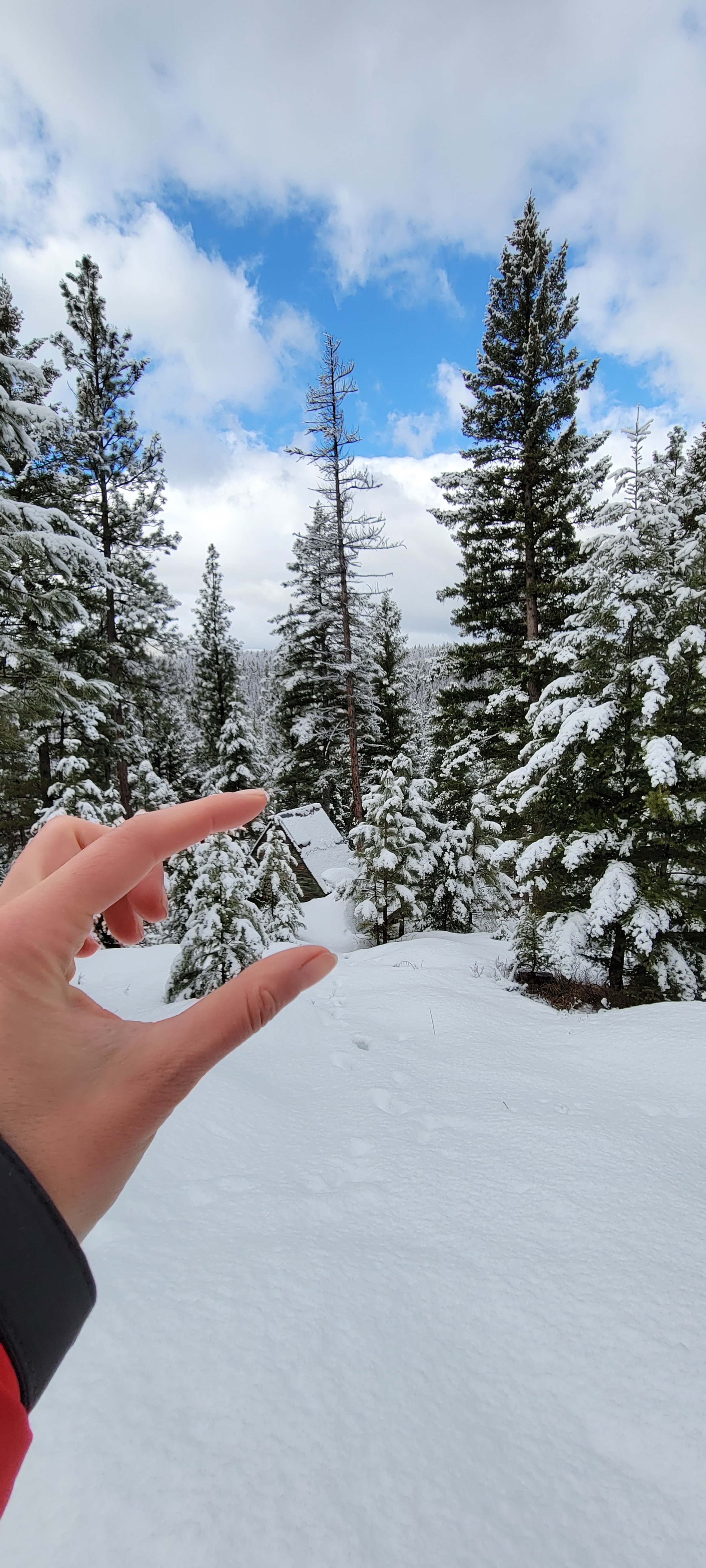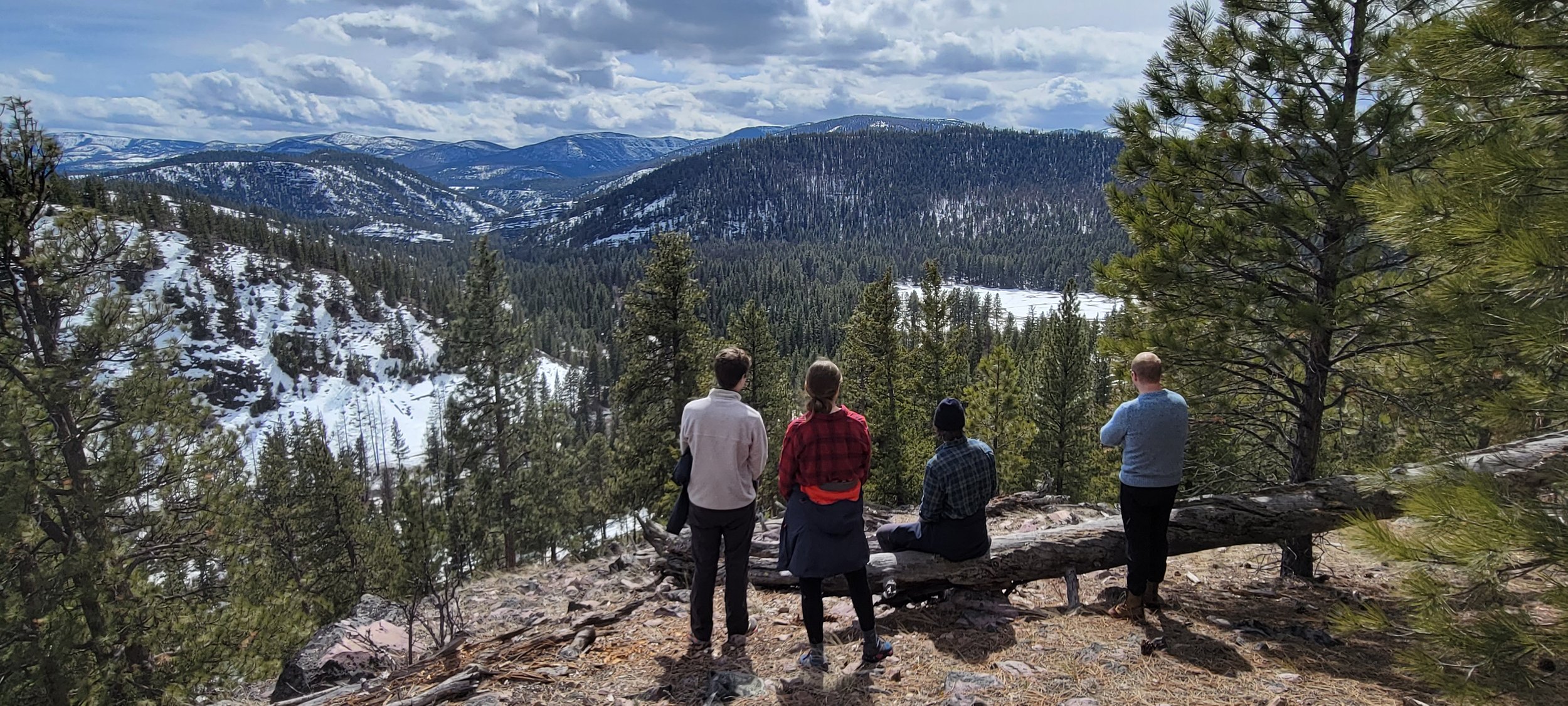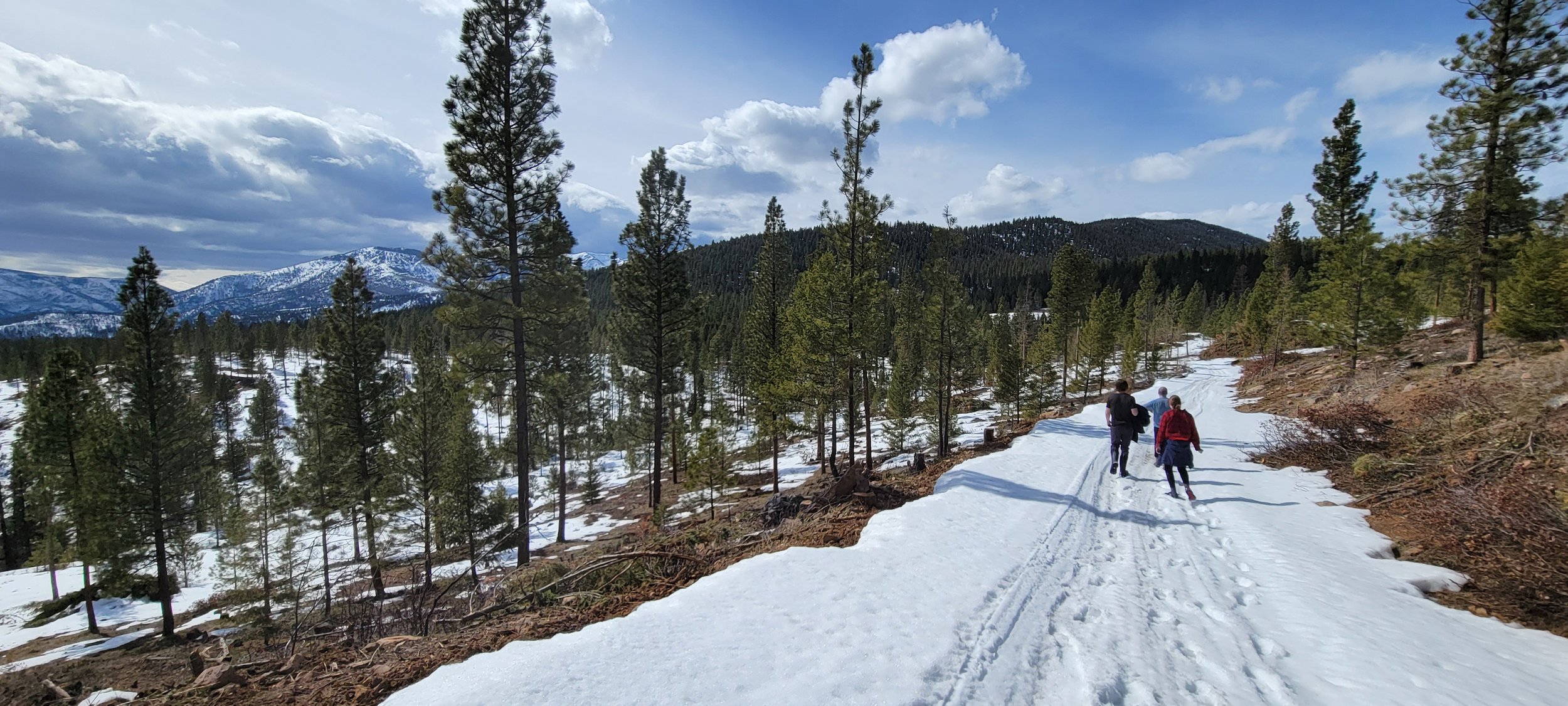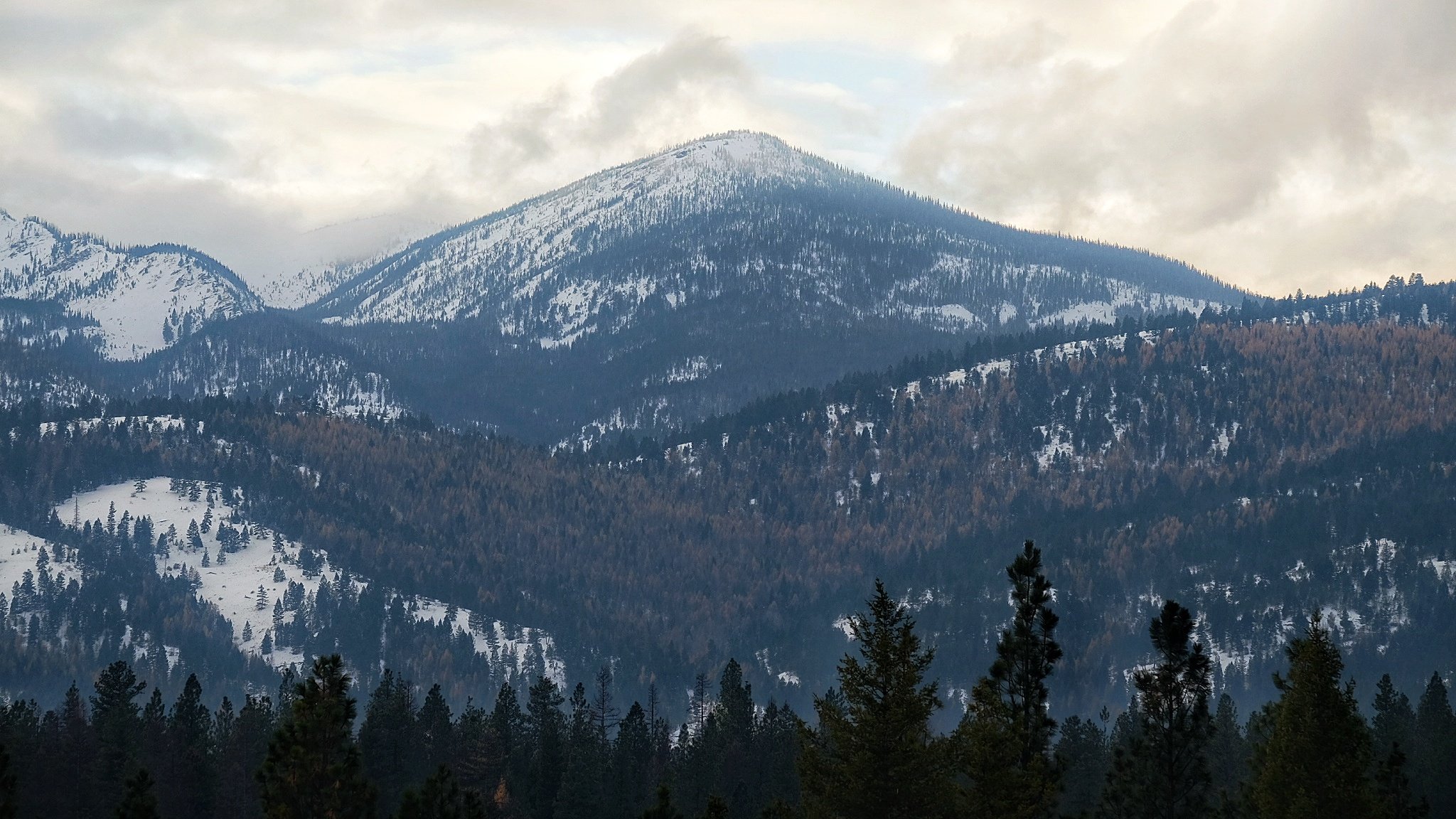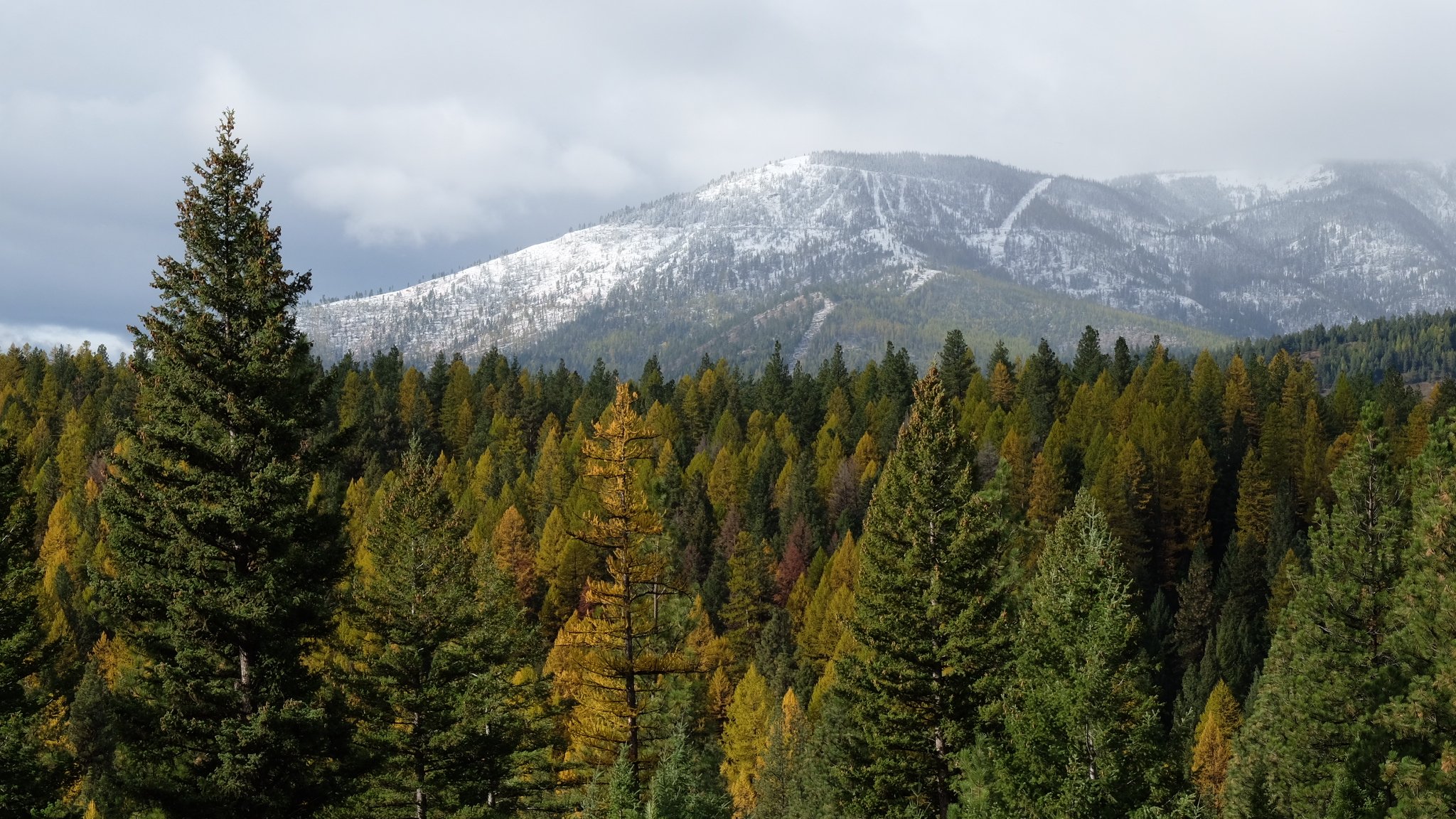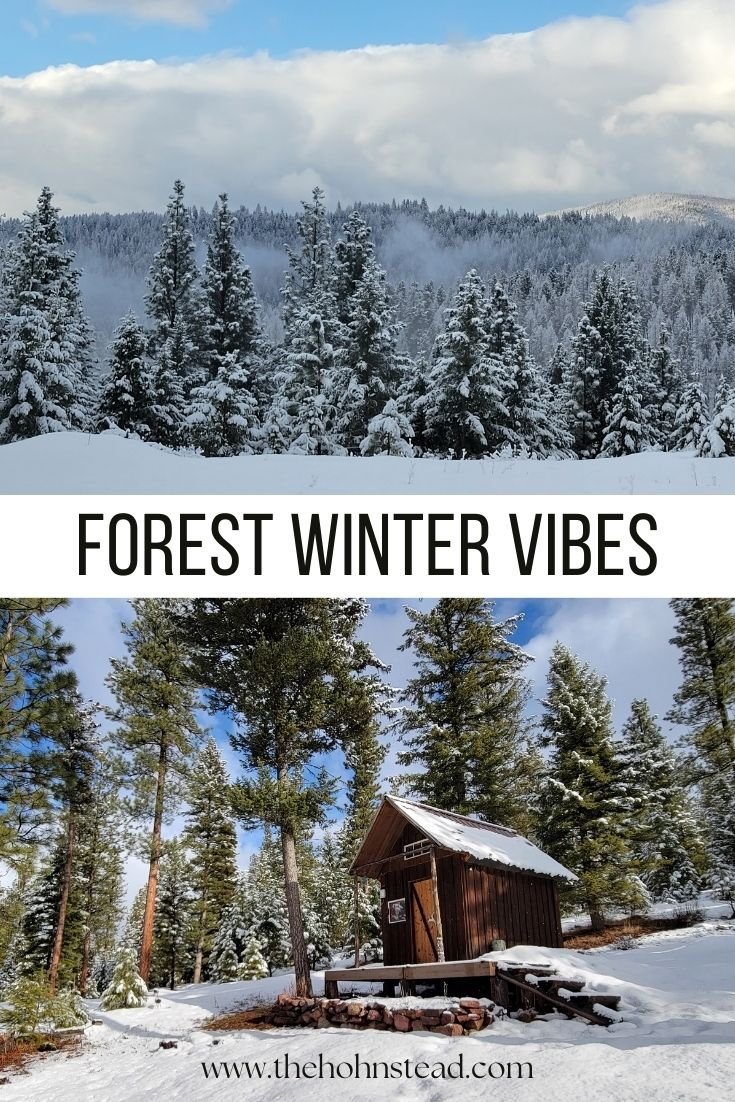From Foraging to Serving Tea and Breaking The Golden Rule
Foraging for rosehips, making rosehip tea and learning the art of being more self-sufficient while living in Montana.
Have you ever found yourself using useful knowledge from your childhood today?
It could be any type of useful knowledge - mathematics, travel, homesteading, navigation, playing a game, magic trick, etc.
For me, recently, it was while foraging.
“Foraging is the act of searching for and collecting wild food resources, such as berries, nuts, herbs, mushrooms, and animals. ”
Living in cities for the past 14 years, I’ve never found myself in a situation where I was in the wild and there was something edible growing that I could have picked. I’m sure there were such occasions on our day-to-day or in our travels, but when food is abundant and you’re living a fast-paced metropolitan lifestyle, your brain doesn’t automatically think to pick a berry of a bush and put it in your mouth.
“I’m not starving, I’m not a savage,” I thought.
Until we found ourselves quitting our jobs abroad and moving to the forest in Montana, my curiosity about nature and everything that pertains to it would start to blossom.
I’m slowly becoming a birder, a homesteader, a hiker, a forest bather, and a star bather as well. It’s true, old dog can learn new tricks :)
Came across these beauties on a hike recently, thinking that if my childhood memories serve me right, these are edible.
Indeed, these Rosehips are!
One of the ways I identified these wild berries was by taking a photo, then using Samsung’s native “Find More Info” feature I got my first identification.
Then I googled Rosehips and checked out what berries and leaves should look like. It also told me that it was an edible plant and that I could use it in a variety of ways, including making tea.
Being a big tea lover, I decided to do just that.
But while foraging these Rosehip berries, I broke one of the Golden Rules of Foraging, which I later learned.
GOLDEN RULES OF FORAGING
Don’t eat what you can’t 100% identify.
Always leave 2/3 of the plant for animals to eat and for the ecosystem’s health.
I felt pretty confident on my identification, but I honestly picked a lot of the berries.
The excitement was in the air and any old thoughts of savages foraging for food in the wild quickly disappeared. Feeling like a kid again, frolicking through the forest in search of more berries to pick, I think I’m going to like living in non-metropolitan Montana after all.
Rosehips can be big or small, when ripe orange or red (avoid green ones that are difficult to detach).
The bushes are prickly, so be careful or use gloves/sheers.
As it turns out, Rosehips grow in place of the flowers, so don’t cut all the flowers to grow more berries.
Also note that Rosehips can be made into a tea from the intact berry, or you can split it open, clean the inside hairs (which can be irritable to the throat or stomach), and do what I did.
I got rid of the black hairs that grow on one end, simply by pinching them off with my fingernails.
Wanting to dry them out completely, I cut each one in half, saving the seeds and scraping the tiny hairs out with my fingernails.
It was laborious, but I like doing things with my hands.
I saved the seeds to plant Rosehips near our garden next spring. Stay tuned for the results.
Then came the drying part, which was super easy.
I placed the halved Rosehips on a metal rack outside to be dried by the sunshine (why use electricity if you don’t have to). Each day, checking the progress, making sure they were becoming hard and very dry.
After a couple of days, they were nice and dry, so I brought them inside.
Understanding that most recipes call for one or two teaspoons of Rosehips for a cup of tea, I decided to run them through a blender.
What started off as a “pretty decent amount” turned into two 4-oz mason jars of Rosehip Powder.
Maybe an hour of manual work between the foraging, cutting, scooping, laying, blending and a couple of days of drying in the sun yielded a small amount of tea, maybe 10 cups worth.
What does it taste like?
That’s the best part, because the taste is what is going to keep me going back to foraging Rosehips.
It tastes sweet and sour at the same time — a flavor I love!
Reading more about Rosehips, it turns out that the longer they stay on the vine, the sweeter they’ll get. This is a great tip for our garden next year!
Also, apparently, if the plant is exposed to frost, before harvesting, the berries will also taste sweeter and more flavorful.
what are other uses of rosehips?
FYI: Information from the Internet, not verified, just letting you know what is out there, do your own research when putting things in your body
Rosehips are considered highly medicinal thanks to a potent combination of vitamin C and antioxidants
Rosehips are perfect to use in homemade syrup or you can infuse them into honey, oil, vinegar, or even alcohol to utilize their medicinal benefits to treat coughs and colds.
Rosehip seed oil is a gentle and soothing moisturizer for dry skin.
Rose hip tea may help reduce inflammation, soothe aches and pains, and treat sore throats
Rose hips contain polyphenols and anthocyanins, which may help ease joint inflammation and prevent joint damage.
Rose hips may be useful as a systemic therapy for hyperpigmentation.
Rosehip oil may help regulate blood glucose levels, which may reduce the risk of diabetes.
Rose hips may help strengthen the kidneys and treat kidney disorders.
Rose hips may help increase metabolism and decrease the concentration of toxins in the liver.
Rosehip extract may have anti-obesity effects, including decreasing body weight gain and lowering abdominal fat.
Foraging is so fun!
Foraging can be a fun activity, as long as you follow the golden rules and know your local laws about where you can and can’t forage. Once you do and you go through the process, enjoying a hot cup of Rosehips Tea is a wonderful experience!
Cabin Core Ideas for Your Bathroom
Check out our selection of Cabin Core Items for The Bathroom.
Our guests frequently compliment our interior design choices, such as our mountains, wildlife and nature-inspired wall decor, kitchen accessories, lamps, rugs, and many others. We decided to share with you our favorite cabin finds. Even if you don’t live in the cabin in the woods, decorating with Cabin Core in mind can help surround you with warm blankets, candlelit evenings, motivational wall decorations and inspirational items that remind you to get outside.
what exactly is cabin core?
Cabincore is a clothing and decor style that's inspired by remote, woodsy locations and evokes a cozy, rustic cabin feel. It's similar to cottagecore and naturecore aesthetic, but with more earthy tones, like greens and browns, and a darker, moodier vibe. Cabincore motifs include:
Colors
Faded paint in olive, terracotta, and rusty tones, as well as hints of forest green
Materials
Thick, textured rugs, faux sheepskin pelts, and thick blankets
Decor
Ornate embroidery, lots of wood, candles, vases of flowers or dried grasses, and nature-inspired art
Motifs
Cabins, forests, hiking, pinecones, forest animals, muddy paths, vegetable patches, gloomy or cloudy days, autumnal seasons, streams, fishing, cold weather, and fireplaces
WHAT CABIN CORE ITEMS CAN I include in THE Bathroom?
Materials
Natural Wood: Use reclaimed or distressed wood for accents like shelving, vanities, or wall paneling.
Stone and Slate: Incorporate stone tiles or accents for a rugged feel.
Color Palette
Earthy Tones: Opt for warm, muted colors like browns, greens, and deep reds to create a natural atmosphere.
Neutral Hues: Soft whites and creams can balance the darker elements.
Textiles
Plaid or Flannel Patterns: Use towels and shower curtains featuring plaid or flannel designs for a cozy touch.
Natural Fibers: Choose rugs and bath mats made from jute, cotton, or wool.
Decor Elements
Wooden Accessories: Incorporate wooden shelves, baskets, or storage containers.
Nature-Inspired Decor: Add items like antler decor, pinecones, or botanical prints to enhance the cabin vibe.
Lighting
Rustic Fixtures: Use lantern-style or wrought-iron light fixtures to add character.
Warm Lighting: Soft, warm lighting creates a welcoming ambiance.
Accessories
Vintage Finds: Look for vintage or antique items to add charm, like old mirrors or rustic soap dispensers.
Plants: Incorporate greenery with potted plants or dried flowers for a natural touch.
This page contains product affiliate links. We may receive a commission if you make a purchase after clicking on one of these links at no additional cost to you. We appreciate your support.
Cabin Core Ideas for your Kitchen
Check out our selection of Cabin Core Items for The Kitchen.
Our guests frequently compliment our interior design choices, such as our mountains, wildlife and nature-inspired wall decor, kitchen accessories, lamps, rugs, and many others. We decided to share with you our favorite cabin finds. Even if you don’t live in the cabin in the woods, decorating with Cabin Core in mind can help surround you with warm blankets, candlelit evenings, motivational wall decorations and inspirational items that remind you to get outside.
what exactly is cabin core?
Cabincore is a clothing and decor style that's inspired by remote, woodsy locations and evokes a cozy, rustic cabin feel. It's similar to cottagecore and naturecore aesthetic, but with more earthy tones, like greens and browns, and a darker, moodier vibe. Cabincore motifs include:
Colors
Faded paint in olive, terracotta, and rusty tones, as well as hints of forest green
Materials
Thick, textured rugs, faux sheepskin pelts, and thick blankets
Decor
Ornate embroidery, lots of wood, candles, vases of flowers or dried grasses, and nature-inspired art
Motifs
Cabins, forests, hiking, pinecones, forest animals, muddy paths, vegetable patches, gloomy or cloudy days, autumnal seasons, streams, fishing, cold weather, and fireplaces
WHAT CABIN CORE ITEMS CAN I FIND
FOR THE KITCHEN?
Decorative Elements from Nature: Decorative items might include pine cones, antlers, dried flowers, or botanical prints. These elements bring the outdoors inside and contribute to the rustic ambiance.
Vintage Appliances: If there are appliances visible, they might be vintage-style or intentionally designed to fit the rustic aesthetic.
Cozy Textiles: Look for comfortable, soft textiles like plaid or checkered tablecloths, curtains, or cushions. These textiles add to the cozy feel of the space.
Warm Colors: Earthy tones dominate, such as browns, greens, and deep reds. These colors create a warm and inviting atmosphere.
Personal Touches: Finally, personal touches like family photos in wooden frames, handmade ceramics, or heirloom kitchen tools can make the space feel even more inviting and unique.
This page contains product affiliate links. We may receive a commission if you make a purchase after clicking on one of these links at no additional cost to you. We appreciate your support.
Building a DIY Stargazing A-frame Cabin with a Remote-Operated Wall in Just 1 Month
We recently deconstructed an old cabin and re-built a new, stargazing cabin. Check out how fast we did it.
From a $400 Rustic Cabin to a Stargazing A-frame with a unique, remote-operated side=wall, our experience and practice building tiny structures has come a long way and we’re so proud to show off and rent out our newest cabin - The Stargazer.
Quick story first.
Back in 2010, we bought this bare land in Bonner, Montana. At that time, this property didn’t have roads, buildings, electricity, septic, or running water - it was just trees and lots of them.
Garrett, visiting for a few months from his teaching job in South Korea picked a remote section of the land and built a very basic, very rustic cabin, which we later called The Shanty. The Shanty was built for $400 and had a loft, where we slept and a downstairs area with a tiny table, chairs, sink, and countertop space.
In 2017, The Shanty went up on Airbnb as a “let’s see what happens,” but to our surprise guests came and they loved it here. We initially thought we were too far from Missoula, Montana for them to want to stay here, but they surprised us with incredibly complimentary reviews, and comments, and a small business was born.
Over the years, we have built other tiny structures on our property, now with the idea to host more people here and to create a vacation destination for couples traveling with pets.
A cabin, that was an inspiration for The Stargazer cabin, was our 2017 cabin - Transforming A-frame. We bought the plans from tiny house designer Derek Diedricksen for just $30 and in three weeks we were able to complete the 80 sq. ft. A-frame cabin. We ended up using a lot of recycled materials during that construction, so our total cost there was just $700 and after posting about it on Alla’s blog, The Transforming A-frame Cabin went VIRAL!
We couldn’t believe the success of the A-frame cabin, the love it got from our guests, the coverage it got from huge platforms like Zillow and Airbnb, famous vloggers like Kirsten Dirksen and Eva Zu Beck, and of course financially, our small business was growing rapidly, so much so, we were able to quit our jobs abroad and make The HohnStead Glamping Cabins our primary source of income.
Fast forward to January of 2024, when we decided to say goodbye to our least popular cabin The Shanty. We felt that it served our purposes well, by being our shelter during the first few years of owning our property, then acting as a brew shack for Garrett’s Homebrewing, and eventually a short-term rental cabin on Airbnb. Because we’re not interested in keep building more cabins, we wanted to take advantage of The Shanty’s remote and beautiful location, but with an improved cabin.
We understand the importance of stargazing for our guests and our secluded property has incredible stargazing opportunities. So, the importance of clear roofing or a skylight was a high priority for the new cabin.
Analyzing the popularity of our transforming A-frame cabin, we decided to build a similar structure, but larger, re-using The Shanty’s materials if we could and re-working the rigging system on the lift-able door wall.
But first, the deconstruction…
Deconstruction was tedious and dirty, but we ended up salvaging a lot of boards, panels, a window, a door, roofing, trim, and other items that we didn’t have to buy/make when building The Stargazer in its place.
Between deconstruction time and building time, a few months passed (winter in Montana is cold and snowy, so we used it as an opportunity to travel and plan The Stargazer build). We were so eager to return and get our hands dirty again.
Not liking to backtrack, it was important for us that we could reuse the existing deck and Shanty’s platform. The Shanty’s platform was full 3 inches above the old deck so the composite decking was pulled up and custom-cut joists were added atop the old joists in order to bring the low parts up to level. We also used this as an opportunity to firm up and reinforce some areas that needed attention.
Once the platform was up to speed, the As were put into place. We designed the Stargazer to make use of commonly available lumber sizes. The A’s are 2x6x12ft and the outside ones seen here we laid out using a shop floor to ensure accurate angled cuts.


Once the two outside As were placed in position and plumber, the rest of the 2x4s went into place rather quickly.
We decided to go with a vibrant color scheme, obtaining two gallons of reds from Home Depot’s “Oops Paint” Section.
Because of the existing deck and garden rock walls (i.e. we wouldn’t have the benefit of working out of a tractor’s bucket), careful consideration had to go into the order in which the polycarbonate, sheet metal, and ridge cap would be installed.

The interior colors and scheme were inspired by Pinterest color combinations, attempting to keep it bright, fun, and playful. We believe that vacation destinations must vary greatly from our home situations, so a plain or minimalist color scheme was out of the question. We also rely heavily on the existing colors in our DIY pantry and buying a brand new color would be wasteful when trying to do maintenance on five of our cabins and Commons Area Lounge.
“An ounce of prevention equals a pound of cure.” someone way smarter than me once said.
One of the sheets of old OSB had some sponge to it so we popped it right up and replaced it. Being a full sheet replacement not requiring any cuts, the entire job maybe took 30 minutes and helps us sleep much better at night.
The other A-frame on our property has two single beds, which push and click together. For this new A-frame design we wanted to vary it from the existing A-frame and also opted to re-use the Shanty Cabin’s mattress. We searched for a while for a bed frame, but due to the sloped walls of this cabin, we decided to build something low profile ourselves.
We were able to re-use the milled lumber from the inside The Shanty’s walls for the recessed bottom section of the bed frame. Solar LED lights create a nice ambiance in the evening/night (not pictured). The visible exterior sections of the bed frame were created by store-bough cabinet board. Interior/unseen sections of the bed frame were made from re-used OSB boards. A pretty simple bed frame without the headboard, which came together in just a few hours.
We contemplated to build storage into the bed frame, but decided against it keep the cleaning to a minimum and possibility of mice invasion low.








Year built: 2024
Size: 168 sq ft
Type: A-frame
Insulation: No
Bathroom: No (shared bathrooms are within 1 minute walk)
Kitchenette: yes
(full kitchen available 1 minute away in the Commons Area Lounge)
Stargazing: 2 translucent panels
Dog friendly: yes
Bed: Queen size
Special feature: Remote-operated translucent door-wall
Purpose: Short term rental unit / glamping cabin
Build duration: around 35 days
Materials Cost: around $1100 with a lot of re-used materials from the previous cabin
If you’re interested in staying at this stargazing tiny cabin in the woods, remember that you can bring your pet, then explore 100+ acres of our forested property. After the hike, soak your stresses away and gaze at the stars from a hot tub. Are you ready to unplug and stargaze?
How to Deconstruct a Tiny Cabin in Just 7 Days
Our first demolition at The Hohnstead, check out this post and video we made just for you.
When Garrett and I travel, we go into our “flow state.”
We usually walk the streets of a new city, with or without aim and we always find ourselves talking about The Hohnstead, our Glamping Cabins Resort.
We discuss what’s working and what doesn’t. What needs to be fixed or built, or as in this year’s upgrade - a cabin demolition in order to build a new cabin, which would better serve our seasonal guests.
This demolition project was the first for us and it took about a week to complete.
My most favorite (and scariest) moment during this cabin demolition came when Garrett instructed me to get onto the roof in order to take off the screws of a ridge cap.
Uh-oh!
A chance to ride the metal stallion?
A chance to fall off and never have to do another construction project again?
A chance to do “a job” that may put my husband in jeopardy due to his poor hips flexibility?
What you don’t see here is that it took me 10 minutes to talk myself into making the leap from the tractor onto the OSB board and onto the roof. With no supports, safety harnesses, or stunt doubles…
Either way, it needed to be done and we got it done! Getting off that thing was my favorite <3
Shanty Deconstruction at The Hohnstead Glamping Cabins Resort
Cabin Deconstruction at The Hohnstead Glamping Cabins Resort in Bonner, Montana
What is life like in the forest?
Is it glamorous or challenging AF? Peak inside to see what we think after 14+ years in the woods.
Living in the forest during winter is a unique and enchanting experience. As the owner of a glamping resort nestled in the heart of Montana, surrounded by nature's beauty, the winter season paints a picturesque scene that captivates both the senses and the soul.
🌲 Waking Up with Nature's Clock
In the forest, the day begins with a natural rhythm. Waking up at 7 am becomes a ritual, waiting for the sun to make its gradual appearance, casting a warm glow on the frost-kissed landscape. It's a gentle start to the day, in harmony with the serene surroundings.
🌲 Chasing Sunsets and Cozy Evenings
Conversely, bidding farewell to the sun around 5 pm marks the transition into a tranquil evening. The challenge lies in resisting the temptation to retire early, urging the body to stay awake until the comforting hours of 8-9 pm. Embracing the extended evenings creates a unique connection with the stillness of the winter night.
🌲 Woodstove Mornings and Year-Round Preparation
One of the daily rituals involves kindling the woodstove every morning. The wood, diligently collected throughout the year from the property, becomes a source of warmth and comfort during the winter chill. The symbiotic relationship with the land is evident as preparations made in the warmer months pay off during the colder ones.
🌲 Equipping for Winter Adventures
Winter in the forest requires practical adjustments. Ice cleats become essential companions to warm winter boots, ensuring a surefooted journey through the snow-covered landscape. Two pairs of socks become the norm, providing insulation against the winter cold throughout the day.
🌲 Work Clothes and the Call of the Wild
The forest demands a unique wardrobe, where "work clothes" bear the scars of a life surrounded by nature. Torn, cut, or burned, these clothes narrate stories of tree-cutting, brush-pulling, and pile-burning adventures. Each mark is a badge of honor in the life of a forest dweller.
🌲 Nature's Bounty and Quiet Moments
Living in the forest means discovering the unexpected. From identifying animal tracks in the snow to realizing the abundance of food and edible treasures that grow spontaneously, the winter forest is a treasure trove waiting to be explored. The quietude becomes a cherished luxury, spoiling residents with a tranquility that is elusive beyond the forest's embrace.
🌲 A Symphony of Seasons and Resilient Trees
Appreciation for the resilient nature of trees deepens in winter. As silent witnesses to the changing seasons, trees stand tall, their branches adorned with snow, embodying strength and endurance. The forest becomes a living testament to the cyclical dance of life and the enduring spirit of nature.
🌲 Closer to Nature, More Alive Than Ever
Above all, life in the winter forest fosters a profound connection to nature. Amidst the seasonal changes, residents become part of the natural rhythm, their presence acknowledged or overlooked by the resident wildlife. It's a symbiotic relationship that breathes life into the soul, making every moment in the winter forest a celebration of being truly alive.
If you’re looking for a forest vibe for your next summer vacation, look no further than The Hohnstead Glamping Cabins Resort in Bonner, Montana. Ditch the city and we’ll see ya in the woods!
Pin this! Save this for later!
Forest Winter Vibes at The Hohnstead Glamping Cabins Resort in Bonner, Montana
Winter at The Hohnstead Glamping Cabins Resort in Bonner, Montana
























